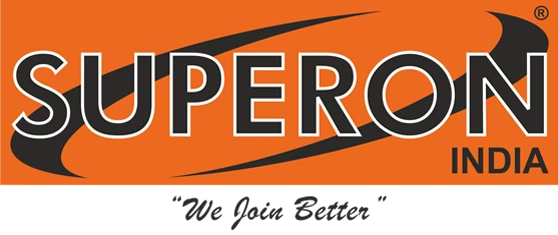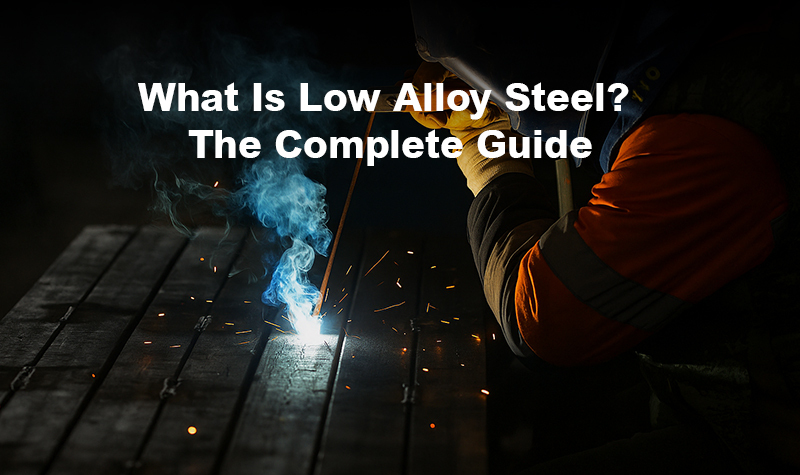Steel is the most common material used in the construction industry. There are about 3,500 different variations of steel, with unique chemical and physical properties. For the past 20 years, a total of 75% of all steel types were developed. After the construction of the Eiffel Tower in 1887, it would only require one-third of the steel made at that time if it was constructed in today's times. Basically, there are 4 main types of steel used in the construction industry.
One of the four is alloy steel. Alloy steel is a unique and powerful mixture of iron and other elements offering enhanced mechanical properties as compared to the plain carbon steel. Alloy steel has two different kinds; low-alloy steel and high-alloy steel. In this blog, we will understand the type of low alloy steel, one of the kinds of Alloy Steel.
What is Low Alloy Steel?
Low-alloy steels have known and precise chemical compositions, made by adding specific alloys that offer improved mechanical properties to these steels when compared with many conventional mild or carbon steels. Such alloys make up 10.5 percent of the steel’s content on average and are added for a specific property they can contribute. Low-alloy steel alloying elements like Aluminum, Boron, Chromium, Copper, Lead, Manganese, Molybdenum, Nickel, Niobium, Nitrogen, Phosphorus, Selenium, Silicon, Sulfur, Titanium, Tungsten, Vanadium, and Zirconium are used in the production process.
What is Loy Alloy Steel Used For?
Low-alloy steel has a wider range of capabilities in various industries due to its improved properties. It’s often used in:
- Pipes: This material is a part of the production of oil and gas pipes.
- Automobile and Jet Engine Components: For strength and durability
- Rail Lines: The toughness provided is substantial for transporting heavy loads.
- Structural Engineering: Onshore and offshore structures also find new applications of low-alloy steels when combined with high-end materials for extra resilience.
High-strength, low-alloy (HSLA) steel, a subgroup of low-alloy steel, is engineered for the purpose of mechanical properties that are required to fulfill specific needs in the design. Applications such as naval ships, structural steel, and machinery use such types of steel.
Types of Low Alloy Steel
Low-alloy steels also fall under many various kinds depending upon the application and their chemical composition. Some common ones are:
Chromium-Molybdenum Steel
This low alloy steel series contains 0.5% ~ 9% Cr and 0.5% ~ 1% Mo. Its carbon content on average is lower than 0.20%, with decent weldability and higher hardening ability due to its alloy trait. The Cr content improves its anti-oxidation and anti-corrosion ability, and Mo enhances its strength in high-temperature conditions; The steel supplying conditions are generally gone through annealing or normalizing and tempering processes.
Chromium-molybdenum steel has been widely used in areas such as the petroleum chemical industry, steam power equipment, and high-temperature services.
Nickel Steel
In a low-temperature environment, the higher strength but lower elongation and toughness of average steel will lead to the plastic ductility to fracture. The low temperature high toughness requirement for low-temperature applications becomes obvious. Any steel suitable for this application is called Nickel steel or low-temperature service steel. Low Alloy Low-Temperature Service Steel is such steel, giving the desired low-temperature toughness by the Ni addition in the carbon steel, usually 2.5% to 3.5 %. Ni can make the ferrite matrix more resistant and at the same time decrease Ar3, which is the third transformation temperature, thus helping the formation of fine grains. Furthermore, in addition to normalizing during the production procedure of low alloy low-temperature service steel, quenching and tempering processes are also parts of the mechanical properties improvement procedure.
Weathering Steel
Generally, rust preventive methods are of two types. To illustrate, a coat of paint, electroplating, ceramics, or the fastening of successive layers of an anti-corrosive material to the steel plate can be done, which is a process to protect the steel surface against a corrosive environment. The second type is by using stainless steel or weathering steel, which is silk-fed to steel by adding anti-corrosion alloy elements into it. The weathering steel is made by incorporating small quantities of other alloying elements such as Cu, Cr, P, Ni, and other alloy elements into the low alloy steel. The material starts to rust just like regular carbon steel during the first session, but after a certain period (typically one year) the rusty surface will be a perfect seal to fend off the rust from further expansion to the inner part of the steel.
High Tensile and High Yield Strength Steel
The low alloy steel becomes more advanced as the mentioned series is added Mn, Ni, Cr, and Mo etc, thereby increasing the strength of the ferrite matrix; improving the hardening tendency and allowing better control of grain size. This standard steel under a welded condition can satisfy the request for high strength, good corrosion resistance, or reduce the notch toughness and other mechanical properties. This kind of steel has a good performance in terms of weldability with a yield strength from 70 to 120 ksi and tensile strength from 90 to 150 ksi.
Applications of Low Alloy Steel
Low-alloy steels are used in military vehicles, oil drilling platforms, pressure vessels and pipelines, off-highway and construction equipment, and structural steel. Steels with low alloy are used for making submarines, bridges, ship hulls, and off-road vehicles, among other things. It has nickel, molybdenum, and chromium in it, which makes it easier to weld, stronger, and harder to cut. A majority of the cases, preheating and postheating are not required to be done in order to weld low-alloy steels.
Low Alloy Steel Properties
Strength
Ferritic, austenitic, and ferritic-super ferritic grades are only examples of the small alloys that are very difficult to know the strength of. A small amount of them is Cr for achieving the Hardenable High-Chromium Steels. Besides, thanks to the work hardening effect of the stretched section, Steel series 300 has an increased strain to failure. Chemists have been able to solve this issue with the discovery of Hastelloy, a new alloy. They added several elements to the mixture. Some of the alloy elements include aluminum and copper. A robust substrate is a necessity for such dental fixtures as dentures and partials.
Welding Characteristics
Workability is the most important attribute of a low-carbon alloy. Low amounts of chromium and carbon are allowed in the 17Cr-12Ni-2.5Mo-1Cu that is designed to replace the use of 316 stainless steel. The chemistry of the metal has been altered. Among the high-grade machinable fusions, deoxidized oxygen gives the workpieces a good appearance.
Corrosion Resistance
Advanced high-strength steel is lighter, cheaper, and on top of that, high-strength. Consequently, they can be made to go faster and are also more energy efficient. However, they can have a problem with corrosion. Low alloy steels being used are coated to be protected from corrosion. Elements such as copper, phosphorus, silicon, chromium, nickel, and molybdenum increase the corrosion resistance of steel.
Benefits of Low Alloy Steel
- High yield strength
- Able to withstand high temperatures
- Good creep strength
- Oxidation resistance
- Hydrogen resistance
- Low temperature ductility
Conclusion:
Everything can be made with material in low alloy steel, from construction and aerospace industries to offering strength, toughness, and corrosion resistance. It is created by simply adding small quantities of alloying elements to it. It can serve under different conditions: whether it is high temperature, wear, or corrosion. An important material for countless industries.
While low-alloy steel may well not be so talkative, it is very much behind the scenes in making skyscrapers, car designs, and constructing bridges, so all things go running with strength and durability.
Also Read: Navigating Welding Electrodes: A Concise Overview

